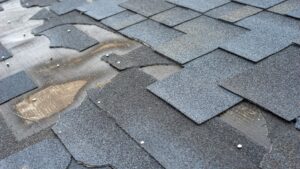Understanding Roof Warranties: What Homeowners Need to Know

Investing in a new roof is a significant decision, and a warranty offers peace of mind by protecting your investment. However, not all warranties are created equal, and understanding the fine print is crucial. In this blog, we’ll break down the types of roof warranties, what they typically cover, and key factors homeowners should keep in mind.
Types of Roof Warranties
Roof warranties generally fall into three main categories:
1. Manufacturer’s Warranty
This warranty covers defects in the roofing materials. For instance, if shingles fail prematurely due to a manufacturing issue, the manufacturer is responsible for replacing them.
- Coverage Duration: Often ranges from 20 years to a lifetime, depending on the material.
- Limitations: Typically does not cover labor costs for installation errors.
2. Workmanship Warranty
Provided by the contractor, this warranty covers mistakes made during installation.
- Coverage Duration: Can range from 1 year to 10 years, depending on the contractor.
- Limitations: Does not cover material defects or damage caused by external factors, such as storms.
3. Extended Warranty
Some manufacturers or contractors offer extended warranties for an additional fee, providing more comprehensive protection.
- Coverage Duration: May combine material and workmanship coverage for 20+ years.
- Limitations: Often requires specific maintenance or inspections to remain valid.
What Roof Warranties Typically Cover

Included Coverage
- Defects in roofing materials (e.g., faulty shingles, flashing)
- Installation errors (if under a workmanship warranty)
- Premature wear and tear due to material issues
Exclusions
- Damage from natural disasters (e.g., hurricanes, hail, or earthquakes)
- Lack of maintenance or improper care
- Regular wear and tear beyond the warranty period
- Structural issues unrelated to the roof (e.g., foundation problems)
Key Factors to Consider
1. Coverage Duration
Understand the timeframe for each type of coverage. Lifetime warranties may not last forever—check for specifics in the fine print.
2. Transferability
Some warranties are transferable if you sell your home, increasing its resale value. Ensure you understand the process and any fees involved.
3. Prorated vs. Non-Prorated
- Prorated Warranties: Cover less as the roof ages.
- Non-Prorated Warranties: Provide full coverage for repairs or replacements throughout the warranty period.
4. Maintenance Requirements
Many warranties require regular inspections and proper maintenance. Failure to comply could void your coverage.
5. Filing a Claim
Ensure you understand the steps to file a claim, including documentation and response times. Acting promptly after an issue is critical.
How to Maximize Your Warranty Coverage

1. Choose Reputable Professionals
Work with certified contractors who are experienced with the roofing materials you select. A poorly installed roof can void both manufacturer and workmanship warranties.
2. Schedule Regular Inspections
Conduct annual roof inspections to catch issues early and maintain compliance with warranty requirements.
3. Keep Documentation
Save all contracts, receipts, and maintenance records. Proper documentation simplifies the claims process.
4. Follow Manufacturer Guidelines
Adhere to care and maintenance recommendations outlined by the manufacturer to ensure warranty validity.
The Bottom Line
Understanding your roof warranty is essential to protecting your home and investment. By knowing what’s covered, ensuring proper maintenance, and working with trusted professionals, you can maximize the value of your warranty and avoid unexpected expenses. When it comes to your roof, preparation and diligence make all the difference.
